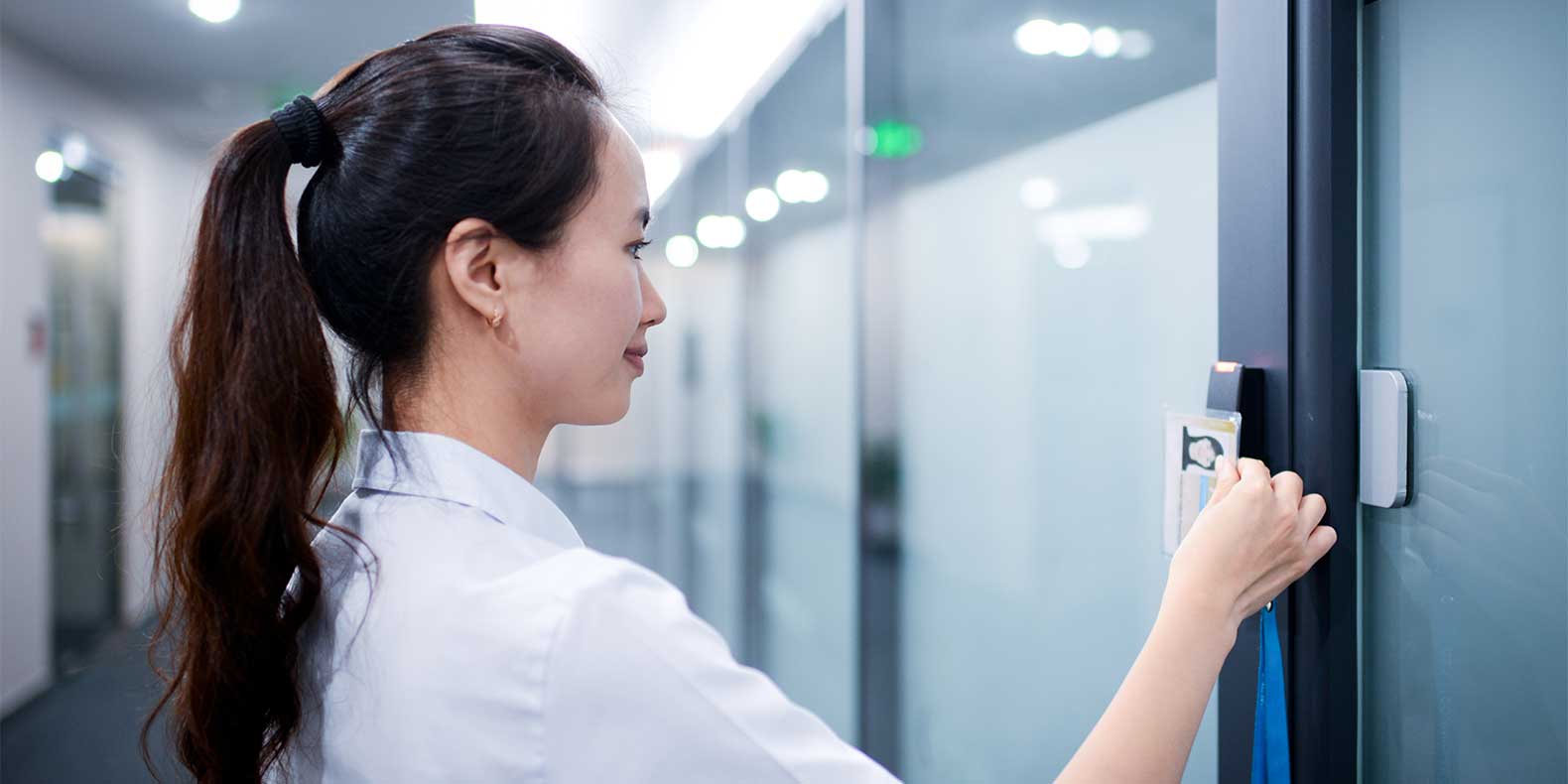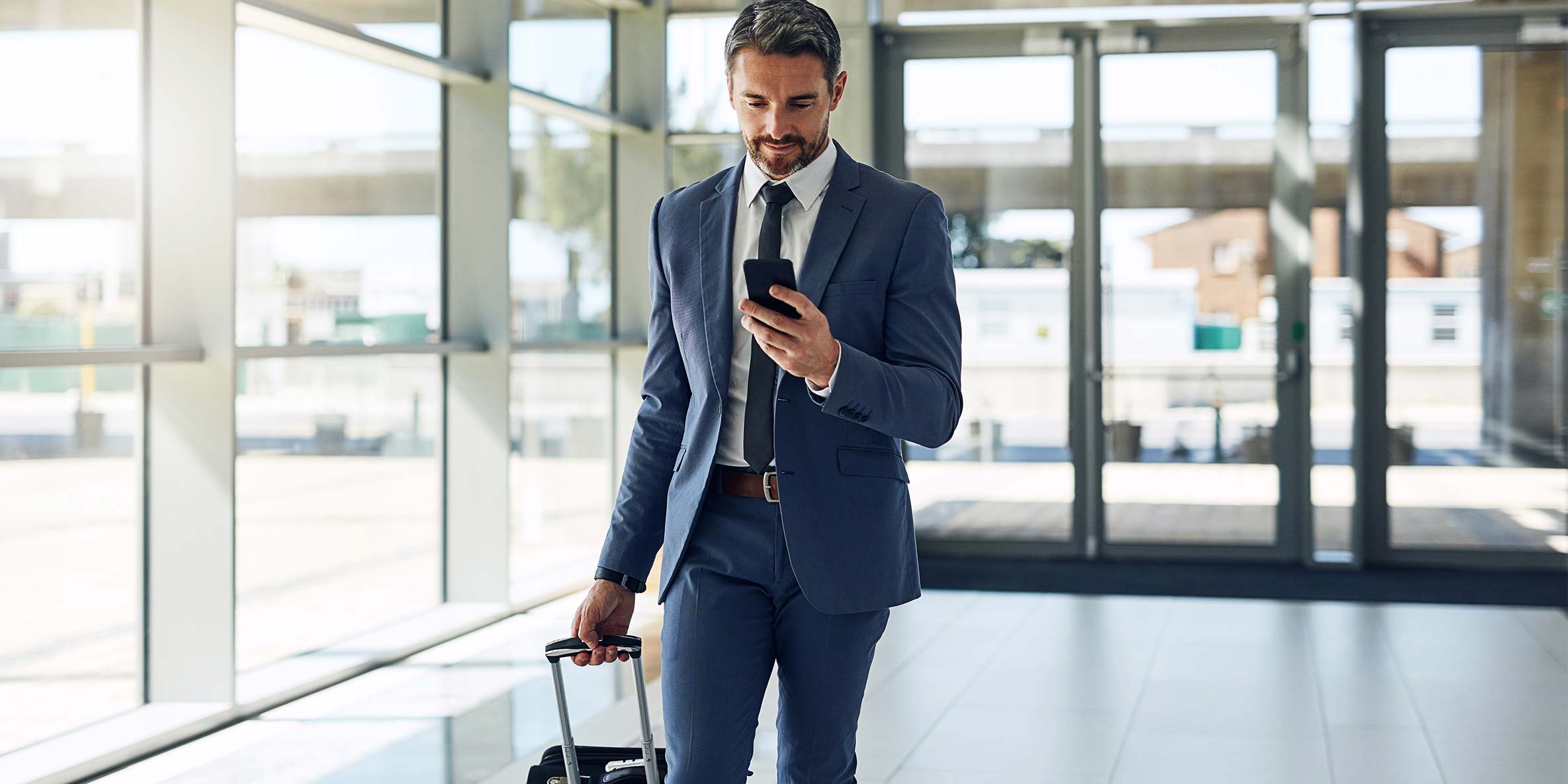This post was originally published on December 11, 2015 and has been updated for accuracy and comprehensiveness.
Biometric access control enables entry at your business based on an individual’s physical attributes, such as facial identification, fingerprints, hand geometry, iris and retinal scans, or voice recognition.
At a time when employers are taking extra precautions to heed the CDC’s recommendations to stop the spread of the Coronavirus, biometric systems’ touchless features can play a role in keeping employees safe.
Discover the key benefits of biometric access control and how you can properly protect your equipment and employees for maximum security.
1. Contactless Entry
Spread of the Coronavirus has raised awareness of personal hygiene, especially as it relates to touching communal surfaces such as keypads and doorknobs.
Touchless biometric access control systems, such as iris scans and facial and voice recognition, enable contactless entry without the fear of contracting or spreading germs.
Some companies are taking their biometric systems a step further by integrating thermal sensors to measure body temperature, a potential indicator of COVID-19 infection.
2. Heightened Employee and Building Security
Although biometric readers and more traditional access control equipment have similar security purposes, physical attribute identification makes false authentication more difficult. Iris and retinal recognition, for example, scan the unique colors, designs and blood vessel patterns within a person’s eye, making it much more difficult to deceive.
It is because of this heightened security that biometric access control has historically been used in high-security environments such as government buildings, data centers, medical offices and labs, file rooms and IT equipment rooms.
3. Greater Convenience
Biometrics can also add convenience for both employers and employees navigating re-entry.
With biometric readers, employers can customize access to specific buildings, rooms or wings within them and even a company’s Intranet system. If a breach occurs, you can quickly determine who was present and take action as needed.
For employees, touchless entry means never having to worry about forgetting or losing keycards, keys or PINS, in addition to easing worry around the Coronavirus.
Practice Appropriate Security Measures
Although biometric access control readers can add convenience and security, you must properly secure and install equipment. Keep the following tips in mind:
- Test your systems before rollout. Ensure biometric readers accurately detect the correct physical attributes for each employee. Before widespread adoption, have employees test that biometric devices are reading features correctly and granting access as intended.
- Train employees on usage. Provide employees with guidelines and training resources to ensure they understand how equipment works.
- Integrate as part of a comprehensive security plan. Biometrics should not serve as a standalone system. Integrate biometric readers with other security mechanisms (i.e. monitored alarms, motion sensors and video surveillance) for maximum protection.
- Plan for a backup, should biometric readers fail due to a power or Internet outage, or equipment malfunction. Additional security measures, such as passcodes or mobile access, can provide employees with secondary access if needed.
- Work closely with a trusted vendor. Recommended biometric equipment varies depending on your business operations, location, environment and necessary security levels.
Do you have specific questions about how your Vector Security devices can better serve you in these uncertain times? Contact us today.


